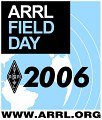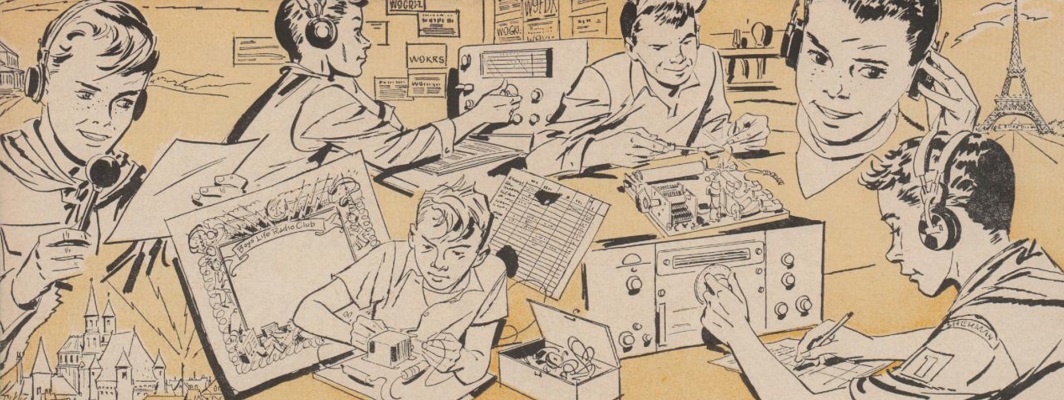 Although I’ve been a ham since 2001, I’ll consider this my first Field Day. Instead of participating in the local RACES field site or one of the local clubs, I decided I’d operate from home using emergency power. I spent the majority of the day completing my amateur-radio-station-in-a-box (ARSIB) project. The ARSIB is centered around an FT-817ND and is housed in a large dry box, the type normally used by outdoors folks and hunters. I built a shelf unit that slides into the box. Components are stacked vertically and secured to their own shelf. At the bottom I have an Alinco powers supply, very compact. Above the power supply is the FT-817ND. Above that is a 100W Tokyo HyPower amplifier for the FT-817ND (normally a 5W rig). Above the amp is an LDG Z-11PRO, great tuner. The tuner is also connected to the FT-817 ACC outlet for seamless tuning during band changes. Above the tuner is an SWR/power meter. The power cables run up the side of the box and feed into a small RigRunner that is mounted on the inside lid of the box. I spent just about all day putting everything together, to include two trips to ACE Hardware.
Although I’ve been a ham since 2001, I’ll consider this my first Field Day. Instead of participating in the local RACES field site or one of the local clubs, I decided I’d operate from home using emergency power. I spent the majority of the day completing my amateur-radio-station-in-a-box (ARSIB) project. The ARSIB is centered around an FT-817ND and is housed in a large dry box, the type normally used by outdoors folks and hunters. I built a shelf unit that slides into the box. Components are stacked vertically and secured to their own shelf. At the bottom I have an Alinco powers supply, very compact. Above the power supply is the FT-817ND. Above that is a 100W Tokyo HyPower amplifier for the FT-817ND (normally a 5W rig). Above the amp is an LDG Z-11PRO, great tuner. The tuner is also connected to the FT-817 ACC outlet for seamless tuning during band changes. Above the tuner is an SWR/power meter. The power cables run up the side of the box and feed into a small RigRunner that is mounted on the inside lid of the box. I spent just about all day putting everything together, to include two trips to ACE Hardware.
Once the ARSIB was complete, I set the box up in my ham shack a powered it with my portable generator running outside. I was now a “1E” station for field day (running from home on emergency power). I worked on the air tonight for about three hours and probably had about a dozen or so contacts. Mainly SSB, but I also tried out PSK-31. I need to mount my Rig Blaster NOMIC to the inside lid as well to help with the PSK-31 option. I also got to work some bands I rarely work like 15M. Lots of folks out there working field day…. good stuff!
The ARSIB is now my radio for portable operations. No more ripping my IC-706 out of the ham shack every time I want to activate a lighthouse. I can now use the ARSIB<.

 A description of the 40M WAS CW net and some operator recommendations…..
A description of the 40M WAS CW net and some operator recommendations…..






 Wow! Day one is over – a total of 78 contacts to include two new states for me… Nebraska and Delaware. Worked a number of other states as well to include Washington, Texas, Iowa, Illinois, Ohio, Alabama, Florida, Georgia, New York, New Jersey, Vermont, New Hampshire, Maine, North Carolina, Missouri, Kansas, Connecticut and Pennsylvania. Also a few into Canada.
Wow! Day one is over – a total of 78 contacts to include two new states for me… Nebraska and Delaware. Worked a number of other states as well to include Washington, Texas, Iowa, Illinois, Ohio, Alabama, Florida, Georgia, New York, New Jersey, Vermont, New Hampshire, Maine, North Carolina, Missouri, Kansas, Connecticut and Pennsylvania. Also a few into Canada. This highly popular and ever growing amateur radio event is on again this year on 19-20 August. In 2005 we had 382 lighthouses in 48 countries who registered on our web site. This year’s event in particular will be dedicated to the memory of its founder and main organiser, Mike Dalrymple GM4SUC, who passed away in December 2005. The event normally starts at 0001 UTC on Saturday 19th August and ends at 2359 UTC Sunday 20th August. This year we will start at 0002 UTC reserving the first minute in silence as a moment of reflection on Mike’s life.
This highly popular and ever growing amateur radio event is on again this year on 19-20 August. In 2005 we had 382 lighthouses in 48 countries who registered on our web site. This year’s event in particular will be dedicated to the memory of its founder and main organiser, Mike Dalrymple GM4SUC, who passed away in December 2005. The event normally starts at 0001 UTC on Saturday 19th August and ends at 2359 UTC Sunday 20th August. This year we will start at 0002 UTC reserving the first minute in silence as a moment of reflection on Mike’s life.